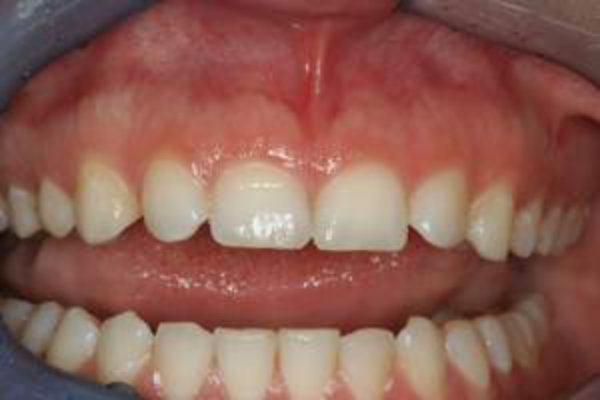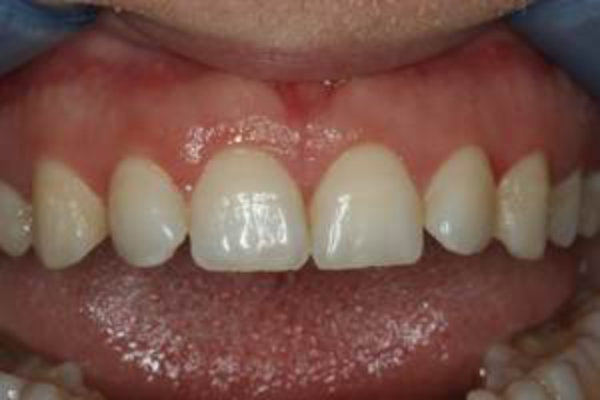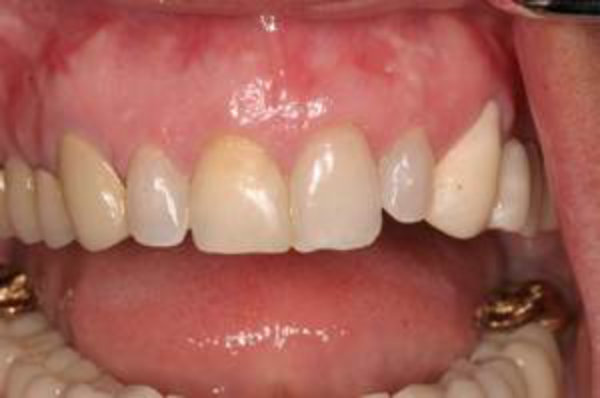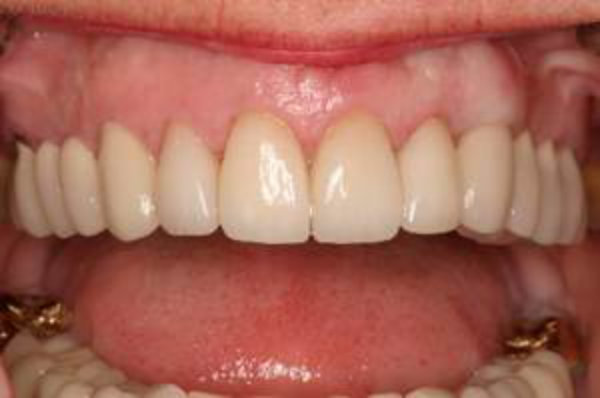If you are diagnosed with periodontal disease, periodontal surgery may be recommended. Periodontal surgery is necessary when it has been determined that the tissue around your teeth is unhealthy and cannot be repaired with non-surgical treatment.
Dr. Churney is highly skilled at a variety of surgical procedures to help restore and maintain optimum dental health. These short descriptions are here to assist you in gaining a brief understanding of procedure and the role it plays in your well-being. If there is any additional information you would like on any of the surgical procedures, please don’t hesitate to ask!

Patients of gingival grafting have lost gum tissue levels around teeth, and therefore attachment loss.
The outcome of this procedure can be two-fold. Augmentation of tissue to prevent further movement of tissue, as well as root coverage to cover exposed roots and to level gingival margin.
What to Expect
How Well Does It Work
What to Expect After Treatment
Discomfort is always a possibility. This maybe dependent on the donor area involved with the surgical procedure. These procedures transplant tissue from one area of the mouth (usually the palate) to another area. In some cases other donor tissue not from the palate can be used with greatly enhance the comfort of the procedure.
Sedative Options
Risks
As with any surgery infection and swelling is possible post operatively.

What to Think About
Is there an esthetic component – is the area visible with a smile? If it is, then can it be covered and what will the appearance be? The whole surrounding area will be evaluated to make sure there is a balance of gingival tissue to create the proper esthetics in the area. Will your smile be enhanced due to completion of the procedure?
Altered Eruption / “Gummy Smile” Procedure. Patients sometimes have excessive gum area covering the teeth, which leads to the appearance that the teeth are short.
This condition is often referred to as a “gummy smile”. With this procedure, Churney Periodontal is able to position tissue to create a more pleasing length and esthetic outcome.
As teeth erupt, the tissue usually pulls back to a level at the enamel and root surface contact point on the tooth. In many cases the tissue covers the enamel, which leads to the short appearance. By and by placing tissue at this line the overall appearance of the smile improves.

Results

What to Expect

Esthetic Crown Lengthening & Restorative Dentistry
When decay occurs below the gum line, it may be necessary to remove a small amount of bone and gum tissue. Your primary dentist may ask Churney Periodontal for this procedure before he or she makes a new crown for your tooth.
If the front teeth are too short or of uneven length, esthetic crown lengthening might be indicated. Reshaping the gum and supporting tissues will allow your general dentist adequate room to place a quality final restoration.

Esthetic Crown Lengthening & Cosmetic Treatment
Esthetic Crown lengthening is used to correct what’s commonly referred to as a “gummy smile.” A gummy smile is apparent when the gum line appears to be creeping down over the teeth, making them appear shorter.
To correct a gummy smile, it is necessary to remove excess gum tissue, therefore allowing more of the natural tooth surface to appear. This procedure creates a more balanced smile, and for many patients, increases confidence.
A frenectomy (also known as a frenulectomy or frenotomy) is the removal of a frenulum, in this case, the thick tissue between the front teeth. The removal of the frenulum allows for teeth to be moved together with orthodontics, as well as aiding in healthier tissue growth next to front teeth without tension.
Whether or not you will ever need a frenectomy is genetically based. Predisposition to this condition is merely a matter of your family history, and is not disease related!
What to Expect
How Well Does It Work?
What to Expect After Treatment
As with any surgery soreness can be present following the procedure. Minimal changes in everyday life.
Risks
Points to Consider
Sedative Options
Eating
Patients who have suffered bone loss affiliated with periodontal disease.
A way to surgical regenerate supporting structures of the teeth. Usually related to bone structures but can be tissue also. In the past resection was completed but now we have the ability to regenerate and regrow supporting structures of the teeth. Multiple materials will be used and not limited to type of bone graft materials, biologic modifiers and membranes.
Why Is It Done
Instead of resection of affected structures, regeneration procedures attempt to rebuild those lost structures of bone. In this way, we can increase the support of the tooth and recreate the natural contours and environment.
What to Expect
What to Expect After Treatment
These procedures take time and will see patient at multiple intervals after initial surgical procedure. Regeneration of bone structure can take up to 12 months and at 6 months radiographs are taken to determine success of regenerative procedure.
Risk
As with any surgery there is risk. Post-operative infection is minimal with proper care, but it is very important to follow proper post-operative instructions especially in regards to hygiene.
Follow-ups
Regeneration procedures are followed very closely for especially the first 6 months. At that time a x-ray is taken to confirm the health of the bone graft as before that is too soon to judge. Following these procedures it is very important to stay with a closely maintained maintenance pattern of 3 months usually alternating between us and your general dentist.
Osseous surgery is a surgical process to remove diseased tissue and remove the effects of disease to the bone itself.
This surgery requires contour changes to the bone architecture of the area surrounding the teeth.
All ages can be involved but mostly patients that have been through initial periodontal therapy at their general dentist office. Maintainable, disease free, healthy gingival tissues will require continued maintenance alternating between offices to insure health.
What To Expect
How Well Does It Work?
Very well, but with todays advances in surgical technique we look to regenerate supporting structures of the teeth rather than resecting them. So even though the surgical process is completed many times we add to this process newer techniques to create a healthier environment.
Risks
All surgical procedures have a level of risk involved, from infection to swelling and other difficulties. The percentage of post-surgical difficulties from Osseous surgery is extremely low.
What to Expect After Treatment
Sedative Options
Points to Consider
What are the goals of treatment? Is there an esthetic component? This is important as following surgical procedures of this type there maybe a change in tissue contour.
Churney Periodontal uses the Waterlase iPlus and the Epic Diode laser for a Dual Wavelength Deep Pocket Therapy with New Attachment. This technique allows for minimally invasive therapy for moderate to advanced gum disease.
The Waterlase iPlus is a truly all tissue laser being able to be used on both hard and soft tissue and with the addition of the Diode soft tissue laser allows for an excellent response to disease tissue.
What is the Pinhole Surgical Technique PST ™
The Pinhole Surgical Technique is a minimally invasive option for treating gum recession. Unlike traditional grafting techniques, PST is incision and suture free.
How does the Pinhole Surgical Technique (PST) differ from traditional gum grafting?
Traditional gum recession treatments involve the use of donor tissue or soft tissue grafts in order to rebuild the gumline. This soft tissue would be sutured in place and would join with existing gum tissue as it healed.
While this traditional grafting treatment is effective, comparable results with better patient experience can be achieved through the Pinhole® Surgical Technique.
How is Pinhole® Surgical Technique (PST) performed?
During the Pinhole® Surgical Technique, a needle is used to make a small hole in the patient’s existing gum tissue. Through this pinhole, special instruments are used to gently loosen the gum tissue. These tools help expand and slide the gumline to cover the exposed root structure.
There are no grafts, no sutures, and no incisions needed with the Pinhole® Surgical Technique. It simply involves the adjustment of the existing tissue.
What are the benefits of Pinhole® Surgical Technique (PST)?
The benefits of the Pinhole® Surgical Technique are many:
What is gum recession?
Gum recession refers to the loss of gum tissue along the gumline. This can occur as a result of periodontal disease (gingivitis, periodontitis, advanced periodontitis), the natural aging process, or abrasive habits when it comes to brushing the teet
Why should gum recession be taken seriously?
When gum recession occurs, the root structure of the tooth becomes exposed. This means that tooth decay and other problems can affect the teeth along the gumline and beneath it. Since healthy gums are essential for a healthy mouth, getting gum recession treated is important for lasting dental wellness.
Have Additional Questions?, Give us at call 727-799-6733
Ready To Schedule a Visit
Click Here! to Make an Appointment
28469 US 19 North Suite 401
Clearwater, FL 33761
DIRECTIONS FROM NORTH
Take US 19 South. Go 1.25 miles after the Curlew intersection and MAKE A U-TURN at Republic Dr./Hammock Pine Blvd. RIGHT TURN into Auctioneer driveway. Follow drive around to back — Suite #401
DIRECTIONS FROM SOUTH
Take US 19 North. Go past Countryside Mall. The next light will be Republic Drive/Hammock Pines Blvd. Travel .25 miles north. TURN RIGHT into Auctioneer driveway after Bob’s Carpet Mart. (Look for the orange roof.) Follow drive around to back — Suite #401
Copyright © 2023. Churney Periodontal.
Website Design & Development by PagesOnly.com